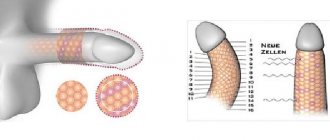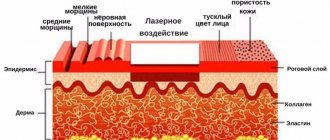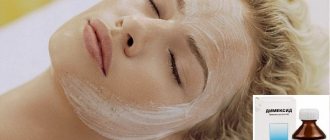And the forecasts are disappointing. In 15 years, the incidence of cancer will increase by 70%, already in 2032 it will be 22 million people. Globally, one in five men and one in six women are potentially victims of cancer. At the same time, prognoses in the later stages of tumor development are not always comforting. And it is better to try to recognize a malignant tumor at the very beginning, when there are often no symptoms yet, and cure it completely.
When cancer is detected in someone in the family, it becomes a real shock for loved ones and for the cancer patient himself. First thought: why did this happen? How could they have missed this? What needs to be done in order to detect cancer when it is easier to fight it, and what to pay attention to in relatives, was told to AiF.ru by Doctor of Medical Sciences, Associate Professor, Head of the Department of Skin and Soft Tissue Tumors of the Moscow Clinical Research Center. . A. S. Loginova Konstantin Titov .
Article on the topic Invisible enemy. Who is at risk and what tests will tell about cancer?
What is the danger of the symptom?
- Signs of a pale face can indicate stress , insufficient sunlight and nutrients, low physical activity and health problems, especially dangerous if it is heart disease.
- If the skin is too pale , then it is poorly protected from the negative effects of ultraviolet rays on it, which can lead to redness and even burns.
- If the skin color is too light due to poor circulation, then an insufficient amount of oxygen and nutrients leads to dryness, sagging and accelerated aging.
Pale face in children
Mothers often wonder why their child’s face is pale. A doctor will help determine the cause by examining the baby’s skin, oral and nasal cavities, eyes and nails. Only after this will he be able to objectively assess his condition. If the child is active, eats well and plays, then the cause may be heredity or a lack of vitamin D.
If the baby is lethargic, drowsy, and gets tired quickly, then this may indicate the development of anemia. Parents of such a child should be especially concerned if dark circles appear under his eyes and bruises appear on his body for no apparent reason. This may be a symptom of diseases of the circulatory system or urinary tract.
Under no circumstances should you make a decision about treating a child on your own without examining a doctor.
When to see a doctor
In the event that sudden skin lightening is not associated with such phenomena as:
- use of cosmetic products that whiten the face;
- lack of vitamins and minerals;
- lack of sunlight;
- low physical activity;
- stress, including lack of sleep.
In other situations, you should consult a doctor, especially
if pallor does not go away even with an active lifestyle, elimination of stress and proper nutrition, since excessively white skin can be a symptom of a serious illness.
Selecting cream
Cream for the eyelids and area around the eyes should moisturize the skin well, but not leave a greasy film on it. It would be good if the cream contains ingredients such as collagen (tightens the skin and makes it more elastic), hyaluronic acid (improves blood circulation and has a moisturizing effect), caffeine (stimulates metabolic processes, removes excess fluid and improves skin tone), manganese (improves blood circulation and helps get rid of dark circles.
Homemade cosmetics
Try these remedies.
Sage tea. Before going to bed, brew 1 teaspoon of chopped herbs in 100 ml of boiling water and close the vessel with a lid for 15 minutes. Cool one part in the refrigerator and warm the other slightly. Then soak two small pieces of cotton wool in the heated infusion and place them on your closed eyes. After 10 minutes, apply a cold compress. Alternately apply a compress to the eyes, either hot or cold, (each for 7-10 minutes).
Cucumber mask. Take 2 teaspoons of finely chopped cucumber and stir them in 1 tbsp. spoon of sour cream. Apply the mask to the eyelids and skin around the eyes for about 15 minutes. Then rinse your face with cool water and apply moisturizer to your eyes.
Alphabet in a cosmetic bag. All about BB, CC, PP and DD creams
More details
Dangerous accompanying symptoms
- The most dangerous accompanying symptom is pain in the heart area. This may indicate heart failure. In other words, the heart is not pumping enough blood. There are many causes of heart failure. In addition to pain and pallor, this disorder of the cardiovascular system is accompanied by weakness.
- If the skin becomes too light and a person is irritable, then this may indicate a disease of the thyroid gland, which has caused decreased production of hormones.
- If bruises easily appear on the skin , just a little pressure on the skin is enough, then this may indicate weakness of the blood vessels, as well as blood cancer and leukemia.
Attention to tests
Children rarely suffer from malignant tumors. They account for only 10% of all childhood diseases. Moreover, the majority of all cancers in children are hemoblastoses (blood tumors). One of the manifestations of the disease is a change in the cellular composition of the blood and anemia (decrease in the level of hemoglobin in the blood). Common symptoms of anemia include fatigue, weakness, lethargy and pale skin.
Of course, a decrease in hemoglobin levels is not always a sign of cancer in a child, but if there are problems in this area, you should be wary and conduct a more detailed examination with a doctor.
Eliminating pallor at home
To remove excessive paleness of facial skin, you must first eliminate the root cause of its occurrence. For short-term reasons, such as a stressful situation, lack of vitamins in the body, low physical activity and others, everything is easy and simple, you just need to move more and reconsider your diet in favor of proper nutrition.
But for more serious reasons, when pallor is a symptom of the disease, then first you need to consult a doctor.
The specialist will not only correctly determine the cause of too noble pallor, but will also prescribe treatment, after which the disease will be cured as much as possible. And along with this, all symptoms, including pallor, will go away.
You can remove facial pallor in the following ways:
- cosmetic masks that will saturate the skin with essential nutrients;
- taking vitamin supplements;
- regular walks in the fresh air in sunny weather;
- proper nutrition;
- sufficient and normal sleep;
- makeup and self-tanning (this is if you need to eliminate facial pallor in the shortest possible time).
Proper nutrition in this case involves consuming the following foods:
- Carrots, which contain large quantities of vitamin A. This compound takes an active part in the regeneration of the skin, and also helps slow down the rate of skin aging;
- Almonds, which contain vitamin E. This vitamin is a natural antioxidant that helps maintain youthful skin and give it a blooming appearance;
- Kiwi has a lot of vitamin C. Regular consumption of this tropical fruit can improve the overall condition of the face;
- Mushrooms, which contain riboflavin , necessary for the body to restore and maintain tissues in normal condition;
- Avocado, which in addition to essential oils contains B vitamins and nicotinic acid. All this helps eliminate redness and inflammation on the skin, maintain its firmness and elasticity;
- Oysters. This product contains zinc, which helps regulate the functioning of the sebaceous glands, which helps eliminate enlarged pores and acne;
- Berries, including blueberries, strawberries and blackberries . These berries contain antioxidants. Consuming these foods helps maintain a fresh and vibrant appearance;
- Sea fish containing polyunsaturated fats. Such compounds help eliminate and prevent inflammation.
White
Previously, aristocratic pallor was held in high esteem.
In the Middle Ages, to achieve perfectly white skin, ladies drank vinegar, took small doses of arsenic, and used lead powder, which often caused poisoning and tumors. Question-answer What color should facial skin normally be?
Fortunately, times have changed - and pallor is no longer held in high esteem. But what to do if a healthy blush is in no hurry to appear on your cheeks?
First you need to determine the cause of excessive whiteness of the skin. This may be a low-calorie diet, a lack of certain microelements in the body, especially iron, which is why paleness is often characteristic of vegetarians.
Another reason: chronic lack of oxygen. Therefore, white, often even grayish or bluish skin tint is the lot of smokers.
Sometimes pallor can appear against the background of lung diseases, low blood pressure, and vegetative-vascular dystonia.
If an unhealthy complexion is not the result of any disease, it is entirely within your power to change it.
Recommendations for maintaining a healthy complexion
Maintaining a healthy complexion is not so easy, especially in modern conditions. The environmental situation, especially in large cities, leaves much to be desired.
The diet of modern man and his way of life, at least the majority of modern people, also cannot be called correct.
In order to acquire a healthy and blooming appearance, you must do the following:
- Carry out cosmetic procedures, which should provide nutrition and cleansing of the skin. Using this measure, you can give your skin smoothness, elasticity and increase blood circulation in the skin. For cosmetic procedures you can use:
- masks, both home-made and store-bought;
- scrubs for cleansing the skin (they can also be homemade), refreshing gels and tonics, facial washes and other products with this effect;
- creams and gels that should nourish the skin.
- Rejection of bad habits. Frequent consumption of alcoholic beverages, as well as smoking, have a negative impact on the entire human body, especially the skin.
In people who drink alcohol excessively, blood vessels may appear on the face, which may also appear unnaturally red. Smoking makes the skin dry and flabby, and also gives it a sallow color. - Refusal of excessively fatty, especially fried, foods . Eating foods high in fat gives the skin a greasy shine and provokes the development of acne.
- Walk more in the fresh air. Thus, you can make up for the lack of physical activity and sunlight, as well as saturate the skin with oxygen.
- Avoid stress. Stress disrupts the functioning of the entire body, which cannot but affect the face. So you need to avoid excessive anxiety (if this fails, then take sedatives), and also get enough sleep, since lack of sleep is one of the most severe stresses.
- Monitor your health, what already
As stated above, facial pallor can be a symptom of serious problems in the body. - Eat more vegetables and fruits, which contain large amounts of vitamins, minerals and fiber. Fiber cleanses the intestines, which has a beneficial effect on the condition of the skin.
- Stay hydrated. A person needs to drink at least one and a half liters of clean water per day; liquid entering the body with drinks and food does not count.
- In addition, you should not consume a lot of sugar and salt , especially the latter, since such compounds retain water in the body causing swelling, which negatively affects the condition of the skin.
- Be active . To maintain a good appearance and your own health, you should move more. You don’t have to spend time at the gym, but you can go for walks and walks more, rather than sitting at home watching TV or a computer.
Risks of youth
Those aged 18-44 years are usually not at risk for so-called non-hereditary cancer: the risk of developing cancer at this age is much lower than in older people. However, there are types of tumors that can appear specifically in this age group. These are sarcomas, melanomas and hemoblastoses. And here it is worth understanding that at a young age the prognosis is always worse. It is necessary to monitor your health more carefully in order to recognize the problem in time and seek medical help.
If a young woman notices lumps and nodes in the mammary gland or discharge from the nipple, and she is not a nursing mother, this is a reason to immediately consult a doctor. Before the age of 40, you need to go for an ultrasound of the mammary glands; for older women, a referral for mammography is prescribed. It is also worth consulting with an oncologist-mammologist.
Article on the topic
Immunity affected by cancer. Who is at risk for Hodgkin's lymphoma In addition, Hodgkin's lymphoma (a malignant tumor of lymphoid tissue) occurs in young people. This is not the most common oncological pathology, but the course of this disease is aggressive. A striking symptom that the person himself and his relatives can pay attention to is enlargement of peripheral lymph nodes, when there is no particular reason for this: the person has not been injured and does not suffer from viral or bacterial infections. If he does not have a cold, his teeth do not hurt or there are no inflammatory processes, and his lymph nodes are enlarged, he should go for a consultation with a hematologist and then undergo blood tests. If necessary, a biopsy of the node may be required.
Another dangerous tumor that should be given special attention is skin melanoma. It most often forms spontaneously in places where the skin was previously burned by the sun. In 20-30% of cases it becomes a consequence of the degeneration of the so-called. melanoma-dangerous nevi (special moles). Tanning in a solarium or on the beach, which was excessive and caused skin burns, is most dangerous for blondes with fair skin. Due to an excess of ultraviolet radiation, the transformation of special skin cells that produce dark pigment into melanoma begins. Particular attention should be paid to changes in the color, shape and edges of the pigment formation and its growth. In such a situation, a reason to visit a specialist oncodermatologist.
Young people can also develop sarcoma: an aggressive cancer that affects bones or soft tissues (muscles, ligaments, adipose tissue, etc.). The most common variant is osteogenic sarcoma.
Young people are also susceptible to thyroid cancer: it manifests itself as a palpable node in the anterior surface of the neck. True, a nodular goiter often looks like this. This is not such a dangerous disease, but still, if such a node appears, a visit to the endocrinologist will not hurt.
And loved ones should be wary if young members of their family have constant headaches, dizziness, decreased vision, or problems with coordination of movements. In this case, it is necessary to conduct an MRI of the brain to check for the presence of a tumor.
Cancer building. What has changed in the treatment of cancer Read more
How are the causes of pallor diagnosed?
If your face becomes pale, it is recommended to visit your doctor. The first thing he will do is ask you about your medical history. This will help determine whether there is a medical reason for your paleness, or whether it is a genetic predisposition, the so-called aristocratic skin. If your doctor isn't sure what's causing your pallor based on your medical history, he'll order a series of tests to help find out.
Statistics of cardiovascular disorders
A blood test can help your doctor identify abnormal conditions such as anemia. Other examinations are used to identify other causes: pregnancy, cancer, vitamin deficiency, abnormalities in the heart, etc.
Medical aspects of the problem
Having noticed that the face has acquired a sallow color, looks unkempt, dull and wrinkled, it is worth ruling out medical causes of this cosmetic defect associated with diseases of the internal organs as early as possible. Unfortunately, their list is quite extensive, starting with the most minor deviations that are easily treatable, and ending with more serious ailments that require long-term and thorough treatment.
- Colds. Once in the body, viruses cause intoxication, fever and other unpleasant symptoms of a cold. It is not surprising that against this background the face takes on an unhealthy earthy tint. While the immune system is working hard, all the body’s reserve forces are spent on resisting pathogenic microorganisms, and the dermal cells may simply lack nutrition. As a rule, this illness lasts 7-10 days, after which the skin again becomes covered with a fresh and healthy glow.
- Food poisoning. The presence of harmful substances in the body causes weakness, nausea and intoxication, against which the complexion changes. It may become pathologically pale, bluish, greenish or sallow - it all depends on the type of poisoning and the characteristics of the body.
- Worm infestation. Parasitic diseases are one of the key reasons for the lack of nutrients in the body with a balanced and nutritious diet. Helminths deprive a person of some of the vitamins and minerals necessary to maintain the normal state of the dermis, as a result of which it acquires a characteristic earthy color.
- Deviations in blood composition. The most common symptom of anemia is a gray complexion. Since the lack of hemoglobin negatively affects the supply of oxygen to the body, the skin quickly loses its elasticity and healthy glow. However, in most cases this is easily corrected with a diet enriched with iron and related vitamins, which improve the absorption of metal molecules.
- Kidney diseases. The excretory system is responsible for cleansing the blood of residual waste products, toxins and other harmful substances. If the kidneys cease to cope with the function assigned to them, the bloodstream gradually becomes polluted. Chronic accumulation of toxic components in the blood against the background of kidney failure will sooner or later lead to the skin acquiring a gray, dull tint, losing elasticity and smoothness.
- Thyroid dysfunction. Endocrine disorders are one of the most common causes of sallow complexion. Hormonal imbalance is quite easy to recognize - in addition to skin changes, the patient will experience pathological loss or, conversely, rapid weight gain, increased anxiety, dullness and weakness of hair and nails.
- Pathologies of the digestive organs. Even with a proper and balanced diet, the possibility of a deficiency of vitamins or nutrients cannot be completely excluded - the normal supply of these resources depends not only on the diet, but also on proper metabolism. Ulcers, gastritis, mucosal injuries and other problems with the digestive tract slow down and worsen the intensity of absorption, which in turn affects the condition of the dermis, which becomes sallow, thin and lifeless.
- Diseases of the pulmonary system. A gray complexion is a sure sign of tuberculosis, pulmonary failure, chronic obstruction and other serious abnormalities associated with the respiratory system. That is why some experienced pulmonologists can accurately determine with just one glance at a patient whether he has serious complications or whether the problem is easily treatable.
- Sepsis. A generalized infection, accompanied by blood poisoning, is an extremely serious illness, one of the accompanying symptoms of which is a lifeless, gray complexion. However, the condition of the skin in this case is far from the biggest problem, since without proper treatment, sepsis quickly leads to death.
- Malignant neoplasms. Tumors of various etiologies are usually one of the first to affect complexion, so it is important not to miss the “alarm bell” by identifying the disease at an early stage. Even asymptomatic oncology will be reflected in the appearance, making the face duller and lifeless, and the intensity of the earthy tint will increase in direct proportion to the stage of the tumor, the presence of metastases and the number of courses of chemotherapy.
- HIV. Typically, the face of people infected with HIV becomes sallow long after diagnosis, when the virus has progressed to later stages. As a rule, such a change is associated not so much with the virus itself, but with frequent concomitant pathologies of the body, which occur in 99.8% of infected patients.
What causes pale skin?
As it turns out, there are several causes of pale skin. Some are caused by everyday factors, while others are caused by medical, environmental, and other factors. Some of these reasons are temporary, others are long-term.
Everyday reasons
Going outside in extremely cold weather causes pale skin. This is due to the constriction of capillaries, which is part of the body's defense mechanism - an attempt to retain body heat so that a person can withstand the cold.
Attention! Low blood sugar also leads to vasoconstriction, which results in paleness. This constriction is caused by the release of adrenaline. Just like low blood sugar, dehydration causes this hormone to be released into the blood, causing artery spasms and, in turn, pale skin.
Sudden paleness of the skin
There are a number of reasons associated with health problems why skin color may suddenly become pale. They are cause for concern and require additional examinations and consultation with a doctor. In some cases, emergency care is required, such as when your lips become numb. These reasons may include:
- vomiting;
- orthostatic hypotension (temporary drop in blood pressure with a sudden change in body position in space);
- stomach upset due to poor quality food, alcohol or medications;
- dehydration due to excessive alcohol consumption, sweating, vomiting, diarrhea;
- early toxicosis during pregnancy;
- acute infection;
- fainting;
- seasickness;
- allergies to medications;
- migraine;
- heatstroke;
- hypothermia;
- heart failure due to a heart attack, arrhythmia, infective endocarditis, or other heart disorder (when the heart cannot pump blood effectively);
- cardiovascular collapse (sudden drop in blood pressure due to severe trauma, poisoning, burns, severe infection and massive blood loss);
- blood loss due to external or internal bleeding, heavy menstrual bleeding, surgery.
Important! A number of drugs have a side effect that results in pale skin. Corticosteroids, aspirin, and antirheumatic drugs can cause paleness. An overdose of psychotropic substances, especially psychostimulants, also causes pale skin.
Children, like adults, often have a pale face. If your child has the following symptoms, we recommend that you contact your pediatrician immediately:
- pallor or blue discoloration of the nasolabial triangle;
- chills;
- dizziness;
- unsteadiness of gait;
- numbness of lips.
Prolonged paleness of the skin
There are reasons that lead to prolonged pallor. Those suffering from anemia, low blood pressure, leukemia, hypertension and chronic heart problems tend to have a pale skin tone throughout their lives. Pallor may disappear if the cause of its appearance is eliminated.
Diagnostics
If you notice that your face does not look fresh every day, your skin has become gray and dull, you should take care of a thorough examination, which can confirm or deny the presence of serious diseases that require immediate treatment. To do this, the doctor may prescribe the following tests:
- laboratory tests: general and biochemical blood test, general urine test, smear to detect helminthic infestation;
- ultrasound examination of internal organs whose condition is in doubt;
- X-ray diagnosis of pulmonary problems;
- gastrointestinal endoscopy;
- computed tomography (if necessary).
Such a thorough diagnosis will make it possible to identify the presence of possible problems in the body and eliminate them in a timely manner, which will certainly have a positive effect not only on the complexion, but also on overall well-being.











